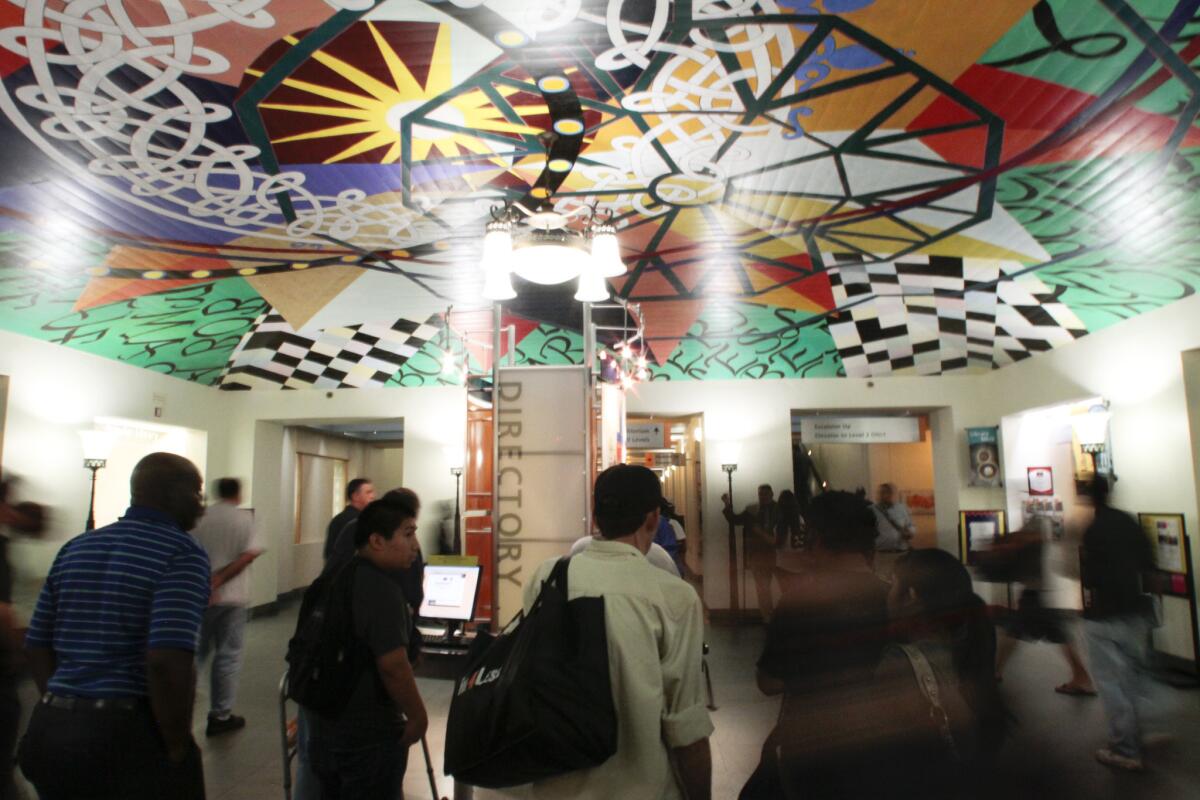Pew finds Hispanics diverge over libraries

- Share via
As a group, Hispanics are less likely than other Americans to access libraries, Pew finds. But those who do are the most enthusiastic users of any demographic.
In a report released this week, Pew finds that Latinos born in the U.S. are equally as likely as their peers to visit a library or library website. Immigrant Latinos, however, are far less likely to do so.
“This gap in use between foreign-born Hispanics and U.S.-born Hispanics, whites and blacks may reflect foreign-born Hispanics’ views of the relative ease of using public libraries,” Pew writes. “One reason immigrant Hispanics may find public libraries more difficult to use is their language use or skills—more than half are Spanish-dominant, according to recent Pew Research Center surveys of Hispanics.”
Pew’s survey did not ask respondents about the actual availability or perceived availability of Spanish-language materials at local libraries.
It did, however, ask about almost everything else. The new report is a drill-down into the data from a landmark nationwide library use survey of 6,224 people (739 Hispanic) conducted in 2013.
About half the Hispanics surveyed have library cards -- but only 40% of foreign-born Hispanics do. Sixty-two percent of U.S. born-Hispanics do -- roughly equal to African Americans (64%) and whites surveyed (63%).
There are more than 17,000 libraries and bookmobiles nationwide that reach 96% of the U.S. population. In 2010, libraries circulated 2.5 billion materials -- books plus DVDs, ebooks and more. But, Pew writes, “public libraries have seen their role shift as they also become a community center and hub for technology (Zickuhr, Rainie and Purcell, 2013), offering a range of services for their users.”
As a group, Hispanics are less likely to know about those other services; 62% do, compared to 71% of white and 74% of African American library users.
Nevertheless, immigrant Latinos value the library as a quiet, safe place to read, study and spend time more than any other group (85% do, compared to 60% of U.S.-born Latinos, 71% of African American and 43% of white library users).
When it comes to seeing the value of libraries, U.S. born Hispanics are roughly parallel with white library users who strongly agree that libraries provide hard-to-find services (44% to 47%) -- but a higher percentage of immigrant Latinos say the same, 63%. And while 77% of immigrant Latinos strongly agree that libraries improve a community’s quality of life, only 65% of U.S.-born Hispanics do.
Overall, Hispanic library users are younger than others using the library: 39% of Hispanic library users are 16 to 29 years old, while only 24% of the total library users are.
Pew has many more details about how Hispanic library users are unique in its full report. Its takeaway, however, is simple: “When it comes to public libraries, immigrant Hispanics pose both a challenge and an opportunity to the library community.”
Book news and more; I’m @paperhaus on Twitter
More to Read
Sign up for our Book Club newsletter
Get the latest news, events and more from the Los Angeles Times Book Club, and help us get L.A. reading and talking.
You may occasionally receive promotional content from the Los Angeles Times.










